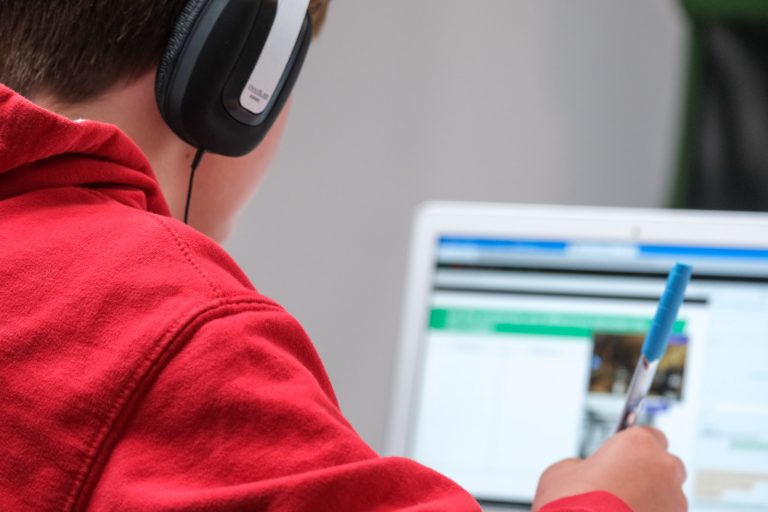With the rapid development of technology over the past several years, the shift toward online education has been growing faster than ever before. The global pandemic caused by COVID-19 further accelerated this phenomenon, forcing institutions to adapt to the new reality of distance learning.
Amidst the challenges and difficulties presented by the outbreak in 2020, one of the most significant changes to educational institutions was the shift toward online education. Virtual learning presented many challenges for students and teachers unfamiliar with it. In this post, you learn how to adapt to online education quickly.
Reasons Behind the Transition
Several reasons led to the shift towards online education, such as improving accessibility, meeting the needs of learners with different preferences and schedules, and reducing costs for both students and institutions.
For instance, online education allows students to learn at their own pace and on their schedule, which is particularly beneficial for those with work or family obligations. It also allowed for a more personalized learning experience, with students selecting courses and programs aligned with their interests and career goals.
Challenges Faced by Educators and Students
The transition to online education presented a range of challenges for both educators and students. For teachers, transitioning from face-to-face to virtual instruction required significant adjustment and necessitated acquiring new knowledge and skills. Many had to learn to use new technologies and adapt their teaching methods, such as illustrating lessons through presentations, to engage with students in a virtual environment.
Similarly, students had to adapt to a new learning environment and sometimes faced difficulties engaging with the material or staying motivated. The lack of in-person interaction with teachers and classmates made staying engaged and motivated challenging.
Despite these challenges, the shift toward online education has opened up new opportunities for students and educators alike. With virtual learning, students can access a broader range of study resources, courses, and programs, and educators can reach a more extensive and diverse group of learners.
Essential Tools for Online Learning
When it comes to tools for online learning, there are a few key ones that educators and students will want to have in their toolkits. These include learning management systems (LMS), video conferencing platforms, and online collaboration tools.
Learning Management Systems (LMS)
An LMS digital platform allows educators to manage, organize and deliver online content. It provides a central location for course materials, discussion forums, assignments, and tests. Students from anywhere can access all of them with an internet connection.
Video Conferencing Platforms
Video conferencing platforms have become essential tools for remote learning. They provide real-time communication between teachers and students, enabling class discussions, lectures, and group meetings. Many venues offer features such as screen sharing, virtual breakout rooms, and document collaboration.
Online Collaboration Tools
Collaboration tools make it easy for students to collaborate on projects, share files, and communicate asynchronously. Some popular tools include Google Drive, Microsoft OneDrive, and Dropbox. These tools allow learners to collaborate on documents, presentations, spreadsheets, and multimedia projects.
Adapting Teaching Methods for the Virtual Environment
While the shift to online learning involves challenges, it also necessitates the development of new, practical teaching approaches for the virtual environment.
Engaging Students in Online Discussions
Online discussions allow students to engage with course material and each other. Educators can encourage engagement by posing open-ended questions, facilitating small group discussions, and using a variety of multimedia, such as videos and interactive quizzes.
Incorporating Multimedia Content
Good online learning experiences require multimedia-rich content. Educators who use multimedia content, such as videos, podcasts, and interactive exercises, have tremendous success engaging students and promoting deeper learning.
Assessments and Feedback in the Digital Space
Assessments are an essential part of the learning process. Digital tools can facilitate the administration of tests and quizzes. Moreover, with digital tools, educators can provide quick and personalized feedback to students, which helps students in their learning journeys.
Supporting Students’ Mental Health and Well-being
With the increased time spent in front of screens, many students may feel isolated or have difficulty balancing screen time with other activities. Here are a few tips to help students maintain their mental health and well-being.
Encouraging Social Interaction
Online learning can be isolating, especially for students who are used to interacting face-to-face with their peers. Educators can create opportunities for students to interact with their peers through virtual study groups or online activities. Such interaction can make online education a more engaging and enjoyable experience for students.
Providing Emotional Support and Resources
Online education can be challenging, especially if students face personal or family situations causing stress or anxiety. Educators can provide resources such as mental health services to help students cope and manage their well-being while studying online.
Balancing Screen Time and Offline Activities
Too much screen time can negatively affect physical and mental health. Educators can encourage students to take breaks from their screens and participate in offline activities such as stretching, yoga, or walking.
Conclusion
The shift to online education has proved challenging for both educators and students. But, with the right tools, approach, and support, educators can not only navigate the challenges of online teaching but also create dynamic, effective, and engaging learning experiences for their students. Educators can successfully transition to online education while providing high-quality learning experiences for their students by considering best practices for online learning and being adaptable.

0 Comments